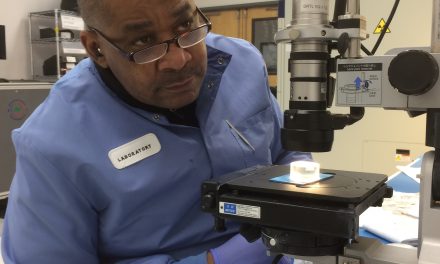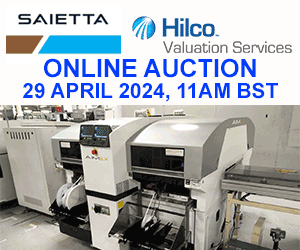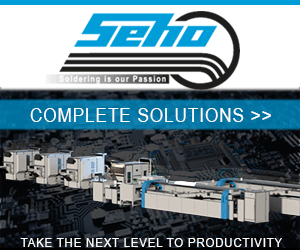A 3D Printing Reality: Printing the Printer
First published on Jabil’s Blog – https://www.jabil.com/insights/blog-main/3d-printing-reality-printing-the-printer.html
Using 3D printing for production parts has been an ongoing discussion for the last few years. While many manufacturers have embraced the promise of customization and distributed production, others have found 3D printed production parts to be too inefficient or downright impossible in their specific verticals.
While only 36 percent of manufacturers have reported using 3D printing for production, according to a Jabil-sponsored survey on 3D printing trends, 57 percent expect to at least double their use of 3D printing for production parts in the next three to five years. More importantly, 93 percent expect to use 3D printing for production parts at some level in the next few years. Download the full survey report.
One of the partnerships that’s driving to make 3D printing for production a reality is the HP and Jabil foundation partnership.
Collaborative Innovation and a Winning Mindset
HP shipped its first production Multi Jet Fusion 3D Printing System in North America to Jabil’s Blue Sky Center in San Jose, California, in 2016. In this major step towards bringing disruptive, digital solutions to market, HP’s 3D printing technology promised three things: speed, quality and cost-savings to transform how products are manufactured. But, in the endeavor to “keep reinventing,” HP knew that engaging a true manufacturing partner to help them propel 3D printing forward in manufacturing was vital.
“If we’re really going to transform the $12 trillion manufacturing industry, we can’t do it on our own,” explains President of 3D Printing at HP, Stephen Nigro. “We embraced a different development model, so others can innovate in spaces where they have a point of view and expertise in high-volume manufacturing.”
Jabil’s Vice President of Digital Manufacturing, John Dulchinos, agrees. “What it really takes is an end-to-end solution. We really appreciate HP’s open approach because it’s inclusive and leverages a full partner ecosystem.”
This open-source mindset is what drives the innovation to transform any industry.
Leading the Digital Transformation of Manufacturing
“In a traditional manufacturing environment, you make and move fixtures and tooling through a set of discrete processes,” says Dulchinos. “With additive manufacturing, you put materials into the printer, eliminating that additional time and cost. We immediately saw the potential to create a supply chain of the future where production could be moved from one location to the next by shifting a digital file.”
Distributed manufacturing is amplified with 3D printing, which enables manufacturers to work with numerous suppliers and OEMs around the world. This concept provides material cost-savings in equipment, production and set-up, allowing companies to invest more into research and development as they look to use 3D printing more efficiently.
HP’s vision for transforming manufacturing is guided by a series of business imperatives, starting with a technology roadmap to ensure the highest levels of product quality, consistency and reliability.
“We built a value chain of innovators,” recalls Virginia Palacios, Director of Strategic Customer Engagement, HP. “We wanted to partner with the best—in software, materials and manufacturing—so we could extend the number of applications and use cases to really explode the market.”
Finding Production Quality in 3D Printing
Making 3D printing a production reality requires the discipline to develop end-to-end process control capabilities for ensuring the highest levels of part finishing and quality required by the manufacturing industry.
As HP worked to integrate continuous quality improvements into its development processes, Jabil was able to apply rigor to part design, testing, validation and final qualification from its wide-range of capabilities applicable to numerous industries.
“Together, Jabil and HP got a tremendous head-start in determining how to make production-grade, 3D-printed parts at scale,” notes Dulchinos.
Print the Printer: Tangible Cost Savings
The age-old question in the industry is answered: can you print a 3D printer?
HP and Jabil applied its early learnings on the Multi Jet Fusion 3D Printing System to demonstrate its readiness for manufacturing. After validating that some 3D-printed parts met precision, property and strength requirements for specific applications, the team evaluated the difference in production costs using 3D printing instead of traditional injection molding for the volumes desired.
The results were staggering.
“We saw breakeven points climb from 5,000 units to 20,000, 30,0000, up to 40,000 units,” says Dulchinos. “We’ve also gone through 19 design iterations for a part in the time it would take us to do one with traditional manufacturing methods. This speeds time-to-market and saves a considerable amount of money, which confirmed our belief that 3D printing is ready for manufacturing applications.”
In terms of tangible cost savings, Jabil helped HP realize that a $20 printer part made using traditional manufacturing methods could be produced with Multi Jet Fusion for less than $6 while being 70 percent lighter. In addition to lowering time-to-market and cost barriers, HP has gained significant design flexibility. Components that once had to be separated into sub-parts with different screws and assembly requirements now can be produced as a single, 3D-printed part.
“It’s possible to achieve 5X cost savings when you integrate functionality,” notes Nigro. “And, when you start eliminating assembly costs, that’s where you really can pick up big savings.”
To date, Jabil is manufacturing more than 50 production-quality parts for HP’s Multi Jet Fusion and other printers while qualifying additional parts for volume manufacturing. Indeed, you can print a 3D printer.
Transforming the Traditional Manufacturing Mindset
Jabil’s work with the company has helped change the mindset at HP: “We have an ‘HP on HP’ initiative where we’re looking for places to produce 3D-printed parts instead of making them with traditional techniques,” explains Nigro. “Learning cycles are so much faster with 3D printing; it will enable us to think, design and make products differently.”
As companies like HP continue to innovate and develop more efficient 3D printers that get the job done for production, other manufacturers will get on board. Although 85 percent of manufacturers want to be the first follower in their industry to adopt 3D printing, according to the survey, 91 percent said 3D printing changed or will change the way they think and operate in how they manufacture goods.













